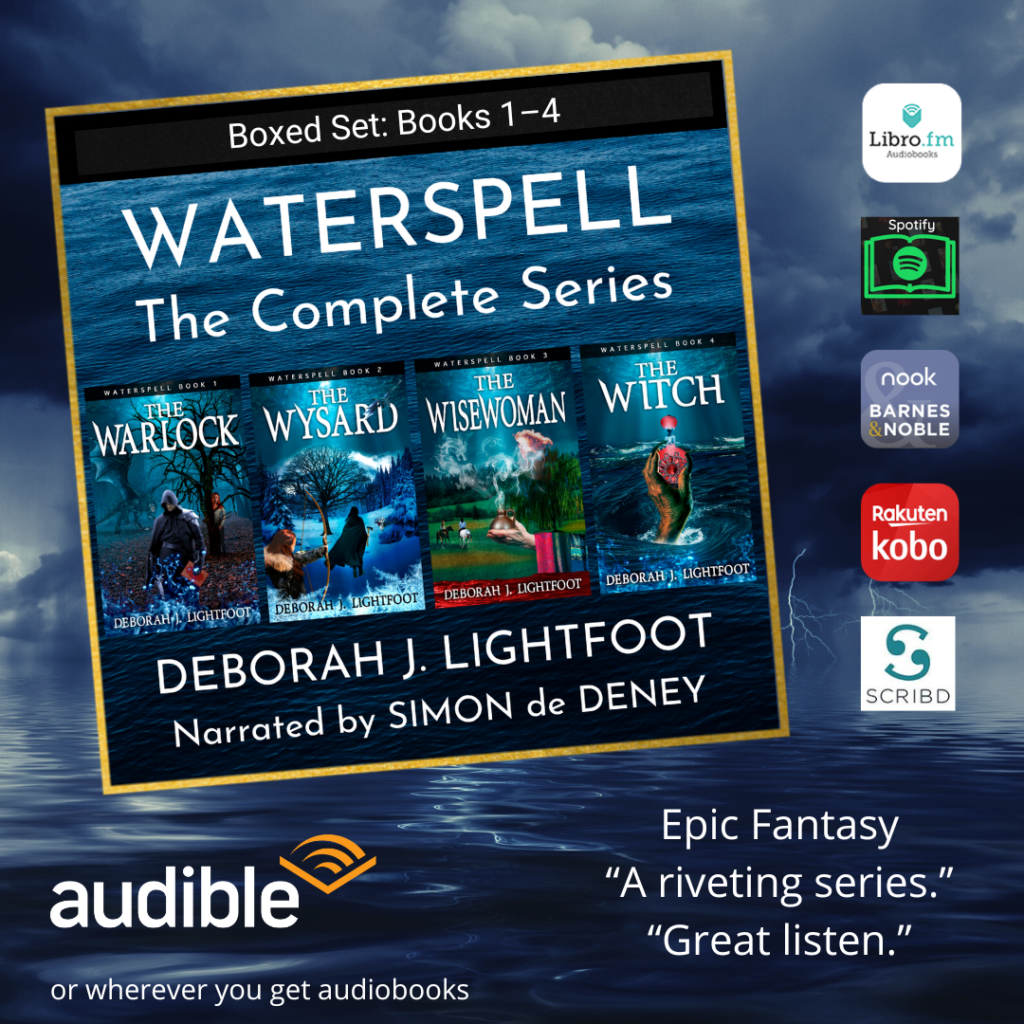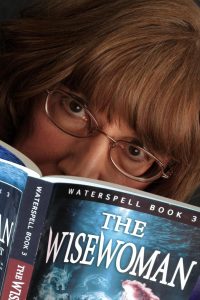Earlier, I blogged about watching “The Terror of History: Mystics, Heretics, and Witches in the Western Tradition,” lectures on DVD by Teofilo F. Ruiz, Ph.D., for The Teaching Company. I mentioned that lectures 1 through 13 held little of interest to me, except for Professor Ruiz’s passing mention of “quest literature” and his contention (with which I agree) that there are only two kinds of literature: the Quest, and the Coming of Age story.
Lecture 14 kicked off the part of the course that is devoted to witches, and that’s when the material really grabbed me. I’m familiar with much of the backstory of the witch craze that gripped Europe (and filtered into Salem, Massachusetts) from about 1480 until the 1690s. However, I did not know that an estimated 80,000 to 100,000 people — mostly old women — were executed during that time on charges of witchcraft.
The course delves deeply into the longstanding misogyny that led to the murder of these mostly widowed or single women. There’s discussion of the shift from ancient, female-centered fertility cults and vegetation (harvest) rituals to the male-dominated religions (Judaism, Christianity, Islam) that would brand women as evil temptresses and seducers of men.
Quoting from the course guidebook [with inserts in brackets from other salient parts of the discussion]:
• “War and other upheavals led to a surplus population of older women. Either widows or unmarried, these women who did not depend on men for their livelihoods [and were past the age of childbearing] became easy targets for witchcraft persecution.”
• “The rise of the [male-dominated] medical profession and its wholesale attack on certain forms of medicine (herbal healing, folk medicine), practiced mostly by old women, is closely related to the birth of the witch craze.”
• Capitalism was transforming Europe’s economy at this time, and “the period of adjustment to new economic systems was so fraught with tensions that it fostered persecution and scapegoating. … The anxieties created by the birth pangs of modernity were experienced as a collective feeling, a kind of mass pathology.”
The parallels with today’s cultural and economic shifts are remarkable. We, too, are undergoing an economic transformation, as low-skill jobs are disappearing and the demand grows for highly skilled professionals. The less-educated in society are afraid: afraid of change, afraid of losing power in the new political and economic order, afraid of people who seem different from themselves—people they’re determined to marginalize. In our own 21st century world, the same kind of mass pathology that once led to the burning of witches has given us Trumpism.
One point that jumped out at me is the fixation on “child murder” — the accusations leveled at “witches” that they killed and ate children. “The charges are as old as humanity itself,” writes Professor Ruiz. “These were precisely the same accusations made against oppressed minorities everywhere—from Christian to Jew to Muslim to Native American—over the course of centuries.”
Today, such accusations find their echoes in the nonsense about a child “sex ring” operating from a Washington, DC, pizzeria. The same impulses are at work now, the mistrust of the “other,” the fear of those who do not look, live, or believe the same way you do. The “other” is viewed as not merely dangerous, but subhuman … demonic, malevolent. Deserving of death.
In 500 years, American society has not progressed. In this country there are people who believe witches cast a “blue wave” spell to influence the outcome of the 2020 Presidential election. There are people who believe Liberals like me kill children. These people would gladly burn me and my kind at the stake.
If you want to understand the deep roots of the science-denying backwardness of tens of millions of Americans, then rent this course from your local library (that bastion of democratic socialism). At the Great Courses website, “The Terror of History” on DVD is offered for $255. I didn’t spend anywhere near that much for my copy, and I advise you to wait for a major sale, or just rent it.
It’s worth the time, particularly lectures 14 through 24: “The Mysteries” (alchemy, astrology, magic) through “The Survival of the Past” (the enduring cultural motifs of fairies, dragons, wizards, etc.). The course guidebook’s bibliography includes several titles that are worth study by history buffs and fantasy fans alike.
(A note on the illustration with which this post begins: It’s a screenshot from “Terror,” from the lecture that mentions “courtly love” — the medieval tradition of love between a knight and a married noblewoman. “The love of the knight for his lady was regarded as an ennobling passion and the relationship was typically unconsummated.” This is the flip side of the coin: women have traditionally been regarded as evil temptresses and witches, or as virtuous madonnas, placed on a pedestal. Neither view is realistic, correct, helpful, or healthy.)









